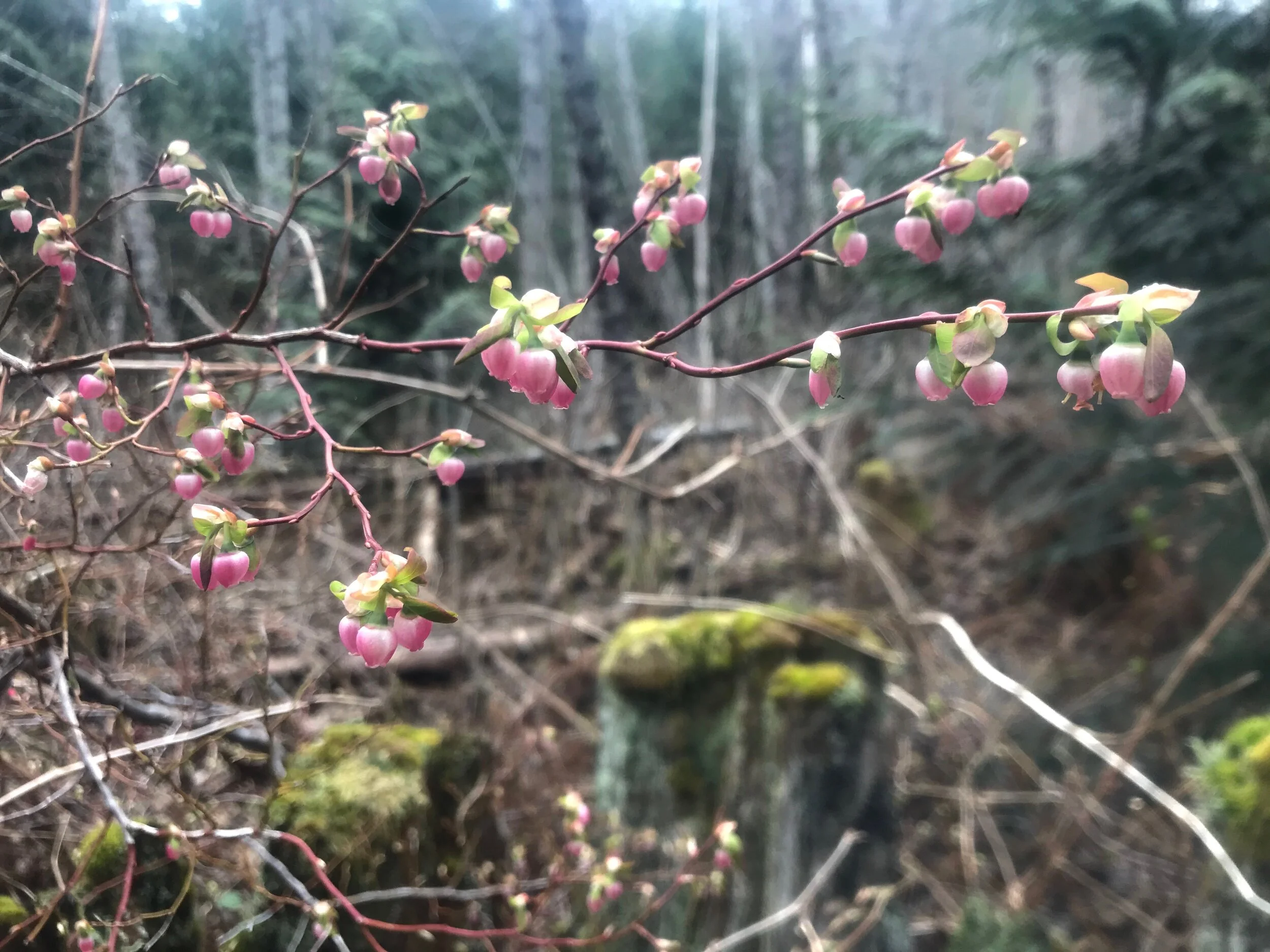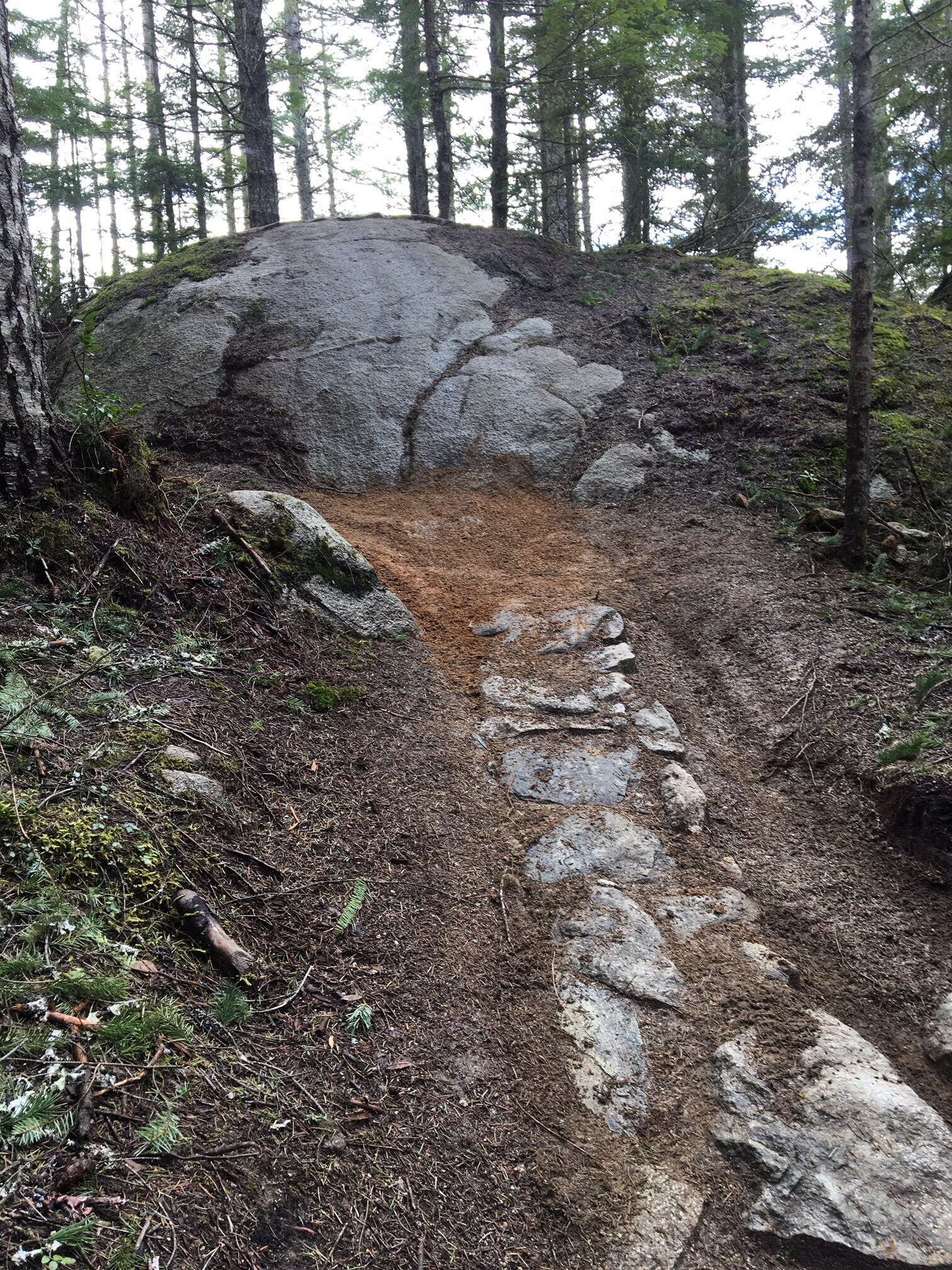Trails Update: May 01, 2020
Stability and Traction.
It’s always easier to build something new from scratch, however, I’m a value (and sometimes emotional-attachment) driven hoarder. This week, Comfortably numb (north secret) was the center of attention.
Sections of complex structures needed upgrading and other wet spots were in need of cedar elevation. We replaced some slick wood with grippy split cedar and added stabilizing supports where the features had been built into decaying stumps.
“4 more years” is great value for certain things: bikes, electronics, worcestershire sauce(?),... also wooden trail features. I like to leave the solid bits as long as possible. So 4 years ago, I chose to leave the chicken-wire covered and bermed C-bridge. Partly because I didn’t want to wade into knee-deep swamp water, partly because I doubted my carpentry skills at the time. Also: It was still solid. Until now.
Necessity is the mother of invention.
Tearing down the structure was made more elaborate thanks to the chicken-wire holding all the rotten bits together. And of course the bridge support had been swimming in a mosquito breeding facility, since 2001. Finding curved trees was a challenge, and so was the prospect of underwater carpentry. I came up with a new (to me) design inspired by Frank Gehry that blends straight and curved beams while keeping everything dry! Working with curves can be fun indeed.
Have a look under there.
Rake and report: YES! Snow removal: NO!
Ok. Last week we covered some “DOs” for volunteer trail maintenance. The response has been outstanding! Thank you!
...Now it’s time for some “DON’Ts”:
SNOW REMOVAL
While I appreciate the community’s enthusiasm for dirt, alas I must insist that shovelling the snow is actually BAD for the trails: The “tunnels” you dig turn the trail into a canal. With drains still blocked… by SNOW… The exposed tread will be saturated and destroyed by keen tires until the adjacent snow has fully melted.
The WORCA trail crew asks that you please STOP digging out the trails. It is best to WAIT until the access route to a trail be snow free, before riding it.
There are now dozens of lower elevation trails to ride. Spend the next few weeks exploring “new to you” trails in the valley bottom. There’s probably a badge for that on trailforks...
TRAIL MODIFICATIONS
First of all, many trails in Whistler are still maintained by their original builders. These builders have a vision for their creations. Imposing your sense of “improvement” to existing trails is culturally disrespectful to the builder and other members of the riding community who love the trail as it was.
Next, there are always unintended consequences: removing natural obstacles (standing trees, rocks, trail chokes) or adding new jumps and berms affects rider speed and line. This almost always creates new problems further down the trail.
Plus: Tree roots and rocks are the foundation for Whistler’s long lasting trails. They hold the trees up and keep the trail soil in place. Removing them to “smooth out the trail” affects water flow and creates durability issues during the dry season enhancing the “blown out dust bowls” and brake ruts.
-------------------
If you have an idea for improving a trail, please reach out to WORCA. We can advise on existing maintenance plans, provide mentorship and get you in touch with the trail’s builder.
Finally: appreciate that your modern pedal-powered science-pony has plush suspension, disc brakes and carbon blah blah blah... it was designed to handle bumps and slips. The trails do not need to feel like sidewalks.
It’s mountain biking after all.
See you on the trails! (2m apart)
Dan Raymond
WORCA Lead Trail Builder



















